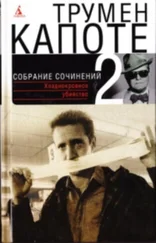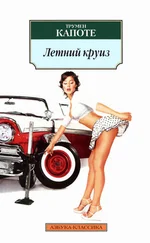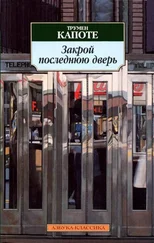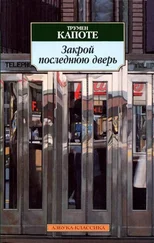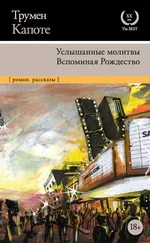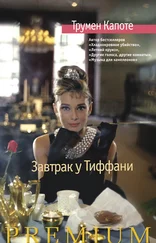Трумен Капоте - In Cold Blood
Здесь есть возможность читать онлайн «Трумен Капоте - In Cold Blood» весь текст электронной книги совершенно бесплатно (целиком полную версию без сокращений). В некоторых случаях можно слушать аудио, скачать через торрент в формате fb2 и присутствует краткое содержание. Год выпуска: 2000, ISBN: 2000, Издательство: Penguin, Жанр: Современная проза, на английском языке. Описание произведения, (предисловие) а так же отзывы посетителей доступны на портале библиотеки ЛибКат.
- Название:In Cold Blood
- Автор:
- Издательство:Penguin
- Жанр:
- Год:2000
- ISBN:0-14-118257-1 / 978-0-14-118257-5
- Рейтинг книги:4 / 5. Голосов: 2
-
Избранное:Добавить в избранное
- Отзывы:
-
Ваша оценка:
- 80
- 1
- 2
- 3
- 4
- 5
In Cold Blood: краткое содержание, описание и аннотация
Предлагаем к чтению аннотацию, описание, краткое содержание или предисловие (зависит от того, что написал сам автор книги «In Cold Blood»). Если вы не нашли необходимую информацию о книге — напишите в комментариях, мы постараемся отыскать её.
In Cold Blood — читать онлайн бесплатно полную книгу (весь текст) целиком
Ниже представлен текст книги, разбитый по страницам. Система сохранения места последней прочитанной страницы, позволяет с удобством читать онлайн бесплатно книгу «In Cold Blood», без необходимости каждый раз заново искать на чём Вы остановились. Поставьте закладку, и сможете в любой момент перейти на страницу, на которой закончили чтение.
Интервал:
Закладка:
" - and the punishment is death"; each time he came to the sentence, Tate enunciated it with a dark-toned hollowness that seemed to echo the train's mournful, now fading call. Then he dismissed the jury ("You have performed a courageous service"), and the condemned men were led away. At the door, Smith said to Hickock, "No chicken-hearted jurors, they!" They both laughed loudly, and a cameraman photographed them. The picture appeared in a Kansas paper above a caption entitled: "The Last Laugh?"
A week later Mrs. Meier was sitting in her parlor talking to a friend. "Yes, it's turned quiet around here," she said. "I guess we ought to be grateful things have settled down. But I still feel bad about it. I never had much truck with Dick, but Perry and I got to know each other real well. That afternoon, after he heard the verdict and they brought him back up here - I shut myself in the kitchen to keep from having to see him. I sat by the kitchen window and watched the crowd leaving the courthouse. Mr. Cullivan - he looked up and saw me and waved. The Hickocks. All going away. Just this morning I had a lovely letter from Mrs. Hickock; she visited with me several times while the trial was going on, and I wished I could have helped her, only what can you say to someone in a situation like that? But after everybody had gone, and I'd started to wash some dishes - I heard him crying. I turned on the radio. Not to hear him. But I could. Crying like a child. He'd never broke down before, shown any sign of it. Well, I went to him. The door of his cell. He reached out his hand. He wanted me to hold his hand, and I did, I held his hand, and all he said was, 'I'm embraced by shame.' I wanted to send for Father Goubeaux - I said first thing tomorrow I'd make him Spanish rice - but he just held my hand tighter.
"And that night, of all nights, we had to leave him alone. Wendle and I almost never go out, but we had a long-standing engagement, and Wendle didn't think we ought to break it. But I'll always be sorry we left him alone. Next day I did fix the rice. He wouldn't touch it. Or hardly speak to me. He hated the whole world. But the morning the men came to take him to the penitentiary, he thanked me and gave me a picture of himself. A little Kodak made when he was sixteen years old. He said it was how he wanted me to remember him, like the boy in the picture.
"The bad part was saying goodbye. When you knew where he was going, and what would happen to him. That squirrel of his, he sure misses Perry. Keeps coming to the cell looking for him. I've tried to feed him, but he won't have anything to do with me. It was just Perry he liked."
Prisons are important to the economy of Leavenworth County, Kansas. The two state penitentiaries, one for each sex, are situated there; so is Leavenworth, the largest Federal prison, and, at Fort Leavenworth, the country's principal military prison, the grim United States Army and Air Force Disciplinary Barracks. If all the inmates in these institutions were let free, they could populate a small city.
The oldest of the prisons is the Kansas State Penitentiary for Men, a turreted black-and-white palace that visually distinguishes an otherwise ordinary rural town, Lansing. Built during the Civil War, it received its first resident in 1864. Nowadays the convict population averages around two thousand; the present warden, Sherman H. Grouse, keeps a chart which lists the daily total according to race (for example, White 1405, Colored 360, Mexicans 12, Indians 6). Whatever his race, each convict is a citizen of a stony village that exists within the prison's steep, machine-gun-guarded walls - twelve gray acres of cement streets and cellblocks and workshops.
In a south section of the prison compound there stands a curious little building: a dark two-storied building shaped like a coffin. This establishment, officially called the Segregation and Isolation Building, constitutes a prison inside a prison. Among the inmates, the lower floor is known as The Hole - the place to which difficult prisoners, the "hard rock" troublemakers, are now and then banished. The upper story is reached by climbing a circular iron staircase; at the top is Death Row.
The first time the Clutter murderers ascended the staircase was late one rainy April afternoon. Having arrived at Lansing after an eight-hour, four-hundred-mile car ride from Garden City, the newcomers had been stripped, showered, given close haircuts, and supplied with coarse denim uniforms and soft slippers (in most American prisons such slippers are a condemned man's customary footwear); then armed escorts marched them through a wet twilight to the coffin-shaped edifice, hustled them up the spiral stairs and into two of the twelve side-by-side cells that comprise Lansing's Death Row.
The cells are identical. They measure seven by ten feet, and are unfurnished except for a cot, a toilet, a basin, and an overhead light bulb that is never extinguished night or day. The cell windows are very narrow, and not only barred but covered with a wire mesh black as a widow's veil; thus the faces of those sentenced to hang can be but hazily discerned by passers-by. The doomed themselves can see out well enough; what they see is an empty dirt lot that serves in summer as a baseball diamond, beyond the lot a piece of prison wall, and above that, a piece of sky.
The wall is made of rough stone; pigeons nest inside its crevices. A rusty iron door, set into the part of the wall visible to the Row's occupants, rouses the pigeons whenever it is opened, puts them in a flap, for the hinges creak so, scream. The door leads into a cavernous storage room, where on even the warmest day the air is moist and chilly. A number of things are kept there: stockpiles of metal used by the convicts to manufacture automobile license plates, lumber, old machinery, baseball paraphernalia - and also an unpainted wooden gallows that smells faintly of pine. For this is the state's execution chamber; when a man is brought here to be hanged, the prisoners say he has "gone to The Corner," or, alternatively, "paid a visit to the warehouse."
In accordance with the sentence of the court, Smith and Hickock were scheduled to visit the warehouse six weeks hence: at one minute after midnight on Friday, May 13, 1960.
Kansas abolished capital punishment in 1907; in 1935, due to a sudden prevalence in the Midwest of rampaging professional criminals (Alvin "Old Creepy" Karpis, Charles "Pretty Boy" Floyd, Clyde Barrow and his homicidal sweetheart, Bonnie Parker), the state legislators voted to restore it. However, it was not until 1944 that an executioner had a chance to employ his craft; over the next ten years he was given nine additional opportunities. But for six years, or since 1954, there had been no pay checks for a hangman in Kansas (except at the Army and Air Force Disciplinary Barracks, which also has a gallows). The late George Docking, Governor of Kansas from1957 through 1060, was responsible for this hiatus, for he was unreservedly opposed to the death penalty ("I just don't like killing people").
Now, at that time - April, 1960 - there were in United States prisons one hundred and ninety persons awaiting civil execution; five, the Clutter killers included, were among the lodgers at Lansing. Occasionally, important visitors to the prison are invited to take what one high official calls "a little peek at Death Row." Those who accept are assigned a guard who, as he leads the tourist along the iron walkway fronting the death cells, is likely to identify the condemned with what he must consider comic formality. "And this," he said to a visitor in 1960, "this is Mr. Perry Edward Smith. Now next door, that's Mr. Smith's buddy, Mr. Richard Eugene Hickock. And over here we have Mr. Earl Wilson. And after Mr. Wilson - meet Mr. Bobby Joe Spencer. And as for this last gentleman, I'm sure you recognize the famous Mr. Lowell Lee Andrews."
Читать дальшеИнтервал:
Закладка:
Похожие книги на «In Cold Blood»
Представляем Вашему вниманию похожие книги на «In Cold Blood» списком для выбора. Мы отобрали схожую по названию и смыслу литературу в надежде предоставить читателям больше вариантов отыскать новые, интересные, ещё непрочитанные произведения.
Обсуждение, отзывы о книге «In Cold Blood» и просто собственные мнения читателей. Оставьте ваши комментарии, напишите, что Вы думаете о произведении, его смысле или главных героях. Укажите что конкретно понравилось, а что нет, и почему Вы так считаете.


